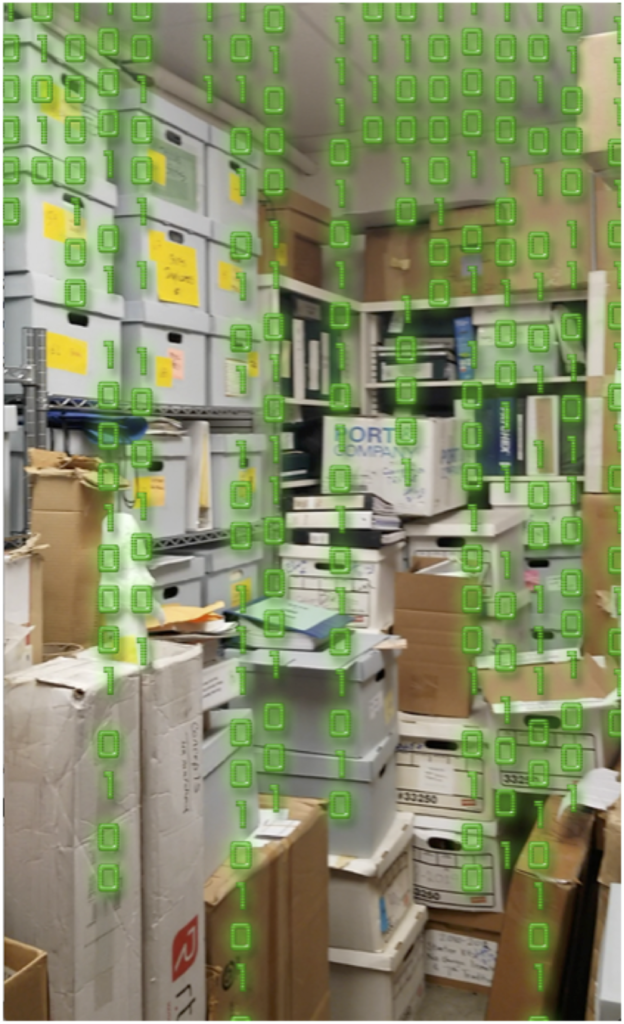
What are digital archives? In the simplest form, a digital archive is the collection of photos, documents, and audio recordings that the archivist wishes to keep for long-term storage. This is beneficial for our fellowship as there are many documents, photos of objects and audio recordings that we have created, and it would be of maximum service to our fellowship to maintain those records. To truly conserve, preserve and provide access to these records, it is suggested that each Area and District have a digital component to their archive.
For a successful digital archive, it can be suggested to have different formats for the storage of items within the archive. Important factors for the storage of items are the naming conventions your digital archive uses, the file formats in which these items are saved and guidelines to outline what the appropriate conventions and formats are. For example, if a photo of an object is taken to represent that object in the digital archive the file name may consist of:
- The date associated with the object in the format YYYY/MM/DD (unless another date format has been outlined in your guidelines)
- Where the item belongs (i.e. what part of the fellowship is it associated with: your Areas acronym, C.A.W.S., W.S.B.T., etc.)
- What the item actually is (a brief description of the item i.e. t-shirt, mug, Area Minutes) -Within this section if the item is a document, it can also be included if the item is revised, first or second draft etc.
File formats can be suggested as follows:
- Documents: .pdf
- Still image: .png (for smaller images) or .tiff (for reprinting)
- Audio recordings: .mp3
These formats ensure the least amount of degradation over time.
An example of a file named using the above standards would read, 2020-04-10_SOCA_Area_Minutes.pdf
An important aspect of our ever-growing fellowship is the creation of social media pages associated with our various Areas and Districts. While these social media pages are not approved by World, they are in existence. As such, it is important to determine what kind of information would be valuable to our archive that can be found on these pages. From current research, with the limited scope of focus and resources C.A. archiving teams have at their disposal, it would be impossible to keep up with the onslaught of posts that exist on these sites. This is where the tool of data mining can be extremely beneficial. Data mining is the process of procuring flyers and digital announcements from these social media sites through the process of combing through posts and saving any flyers or announcements that are deemed valuable to the history of the Fellowship. The flyers can then be saved (using the .png format for the archive and .tiff if they are to be reprinted) to ensure they are not lost within the social media channels.
An undervalued aspect of digital archiving is the way the archive is stored to ensure the preservation of the archive should an archivist experience a total system failure. The best practice to follow is what is called four redundant systems. Each system has its own benefits and pitfalls, but when they are co-opted together, they ensure that there will not be an erasure of our history. The four systems can be outlined as follows:
- The computer on which the archive is saved
- The cloud backup on which the archive is saved
- The external hard drive on which the archive is saved
- An “M-DISC” which is a disc that looks like a CD with much more storage capability, that will last 1,000 years
With four redundant systems, the chance of corruption or total system failure erasing the painstaking work that has been done by C.A.’s archivists would be greatly reduced.
Cataloguing a C.A. archive with a digital counterpart can be seen as futuristic, redundant or even downright overwhelming to Areas and Districts that are starting from scratch. However, it is not impossible. Start small, adding items as they come into your archive and create a set of guidelines that are easy to follow. Make sure to include naming conventions and file formats for saving to ensure everyone on your team is on the same page. If the items in an archive are stored but cannot be accessed, we are undermining one of the principle features of archiving materials. Access is paramount to the creation of a well-rounded archive, and digital archives are an important component of access.
Kayla S. (S.O.C.A. Digital Archivist)